
by MIMO Solutions | communication skills, goals, marketing, sales, social media, social media marketing, Social Networking, tips
 |
| Social Media Sales From Click To Close |
This topic is really why I am writing this book. I was doing some research about social media, and I found thousands of books and articles on how to get followers and grow audiences through social networking. After reading a dozen of the best books on the subject I found that most of them stopped once you grew your audience, but that doesn’t actually translate into sales at the bottom line. Since then, I have found a few books and websites that talk about sales and social media, but still very little information about what happens after the “like.” They all say something like “engage your audience” or “develop the relationships” and no one really tells you how to do this… until now.
Here are the top 10 ways to turn social networking in to actual sales revenue for your company:
1. Having business conversations
Two of the most common mistakes people make when social networking is that they share posts and start conversations about the wrong things. They either only post personal information about what they are eating and where they are going, along with sports, weather and news, or they only post offers and constantly bombard you with their latest marketing messages. No one likes to follow the person who only blasts out spammy sales messages, so don’t get me wrong here. The key is to share interesting information and start conversations about your business and the problems you solve.
Try to find a happy medium in the middle, so you can start having meaningful business conversations. Try to keep posts related to your business on sites other than Facebook. Your personal Facebook page can be more about you, but make sure your friends and family still know what you do for a living so they can use or refer you. On your business Facebook page, treat it more like LinkedIn and keep it about business. Ask questions and post articles that start conversations about your area of expertise and this will lead to more leads and sales.
2. Listening, watching, and caring for your audience’s needs
Another chronic problem with social networking is that it is usually all about you. We love sharing and posting about ourselves, but we hardly ever listen to what others are saying and sharing. Your sales antenna should always be up, and you should constantly be seeking out people who have the type of problems you solve. Find people, groups, blogs, and communities who fit your target market and watch and listen for opportunities where you can be of service. Reach out to others when someone can benefit from your product or service and offer to help in any way you can. Start the conversation and see if it doesn’t end up in more sales.
3. Proactively starting conversations and sharing helpful information with others
Following the previous step, you don’t always have to wait until you see someone post about a need. There is a good chance you know what someone looks and sounds like when they need your company. Seek these people out and offer a hand. When I designed websites and I came across a really bad site with a copyright at the bottom from 5 or 6 years earlier. I knew they needed a new site, so occasionally I would reach out to them with an offer or a helpful suggestion. This can take many forms. You might send an industry related article to a referral partner or client, give some advice to someone making common mistakes in your area of expertise, or just say hi, tell them what you do and offer to be of service if they need you. The key is to not wait for people to seek you out and follow you, but to be proactive and go find people who can buy from you. Many times they don’t know what they are missing, and you can help them discover your company for the first time.
4. Using open ended questions and challenging statements to start conversations
This can be tricky at first, but with a little practice you can get really good at posting questions, articles, or statements that start conversations. Too many people forget there is no “dislike” button on social networking sites, so people are much more likely to interact with positive messages then negative ones. Also, if they are too boring or obvious most people won’t waste their time. Think to yourself what would make you or your business likable. What message would cause people to comment or hit that share button to show all of their friends. Don’t waste you and your prospects time with boring posts or negativity. Try to give them something compelling and uplifting. Humor gets shared quickly around the world.
Don’t forget about tip #1 up there! They should be related to your business, and lead you to prospects not useless conversations about food or politics.
5. Doing a little free consulting
Normally, we discourage salespeople from doing too much free consulting and solving the prospect’s problem before they get paid for it, but social networking is a little different. This is a prospecting activity and not a sales call so it is OK solve some people’s problems, especially if hundreds or thousands of people can see you do it. Don’t be afraid to share too much inside information on your blog or social networking sites. Chances are that people can’t do it themselves anyway, or you wouldn’t be in business. Take this post for example. I am giving away a lot of good information about how to sell, but I know most of you can’t or won’t take the time to do all 10 of these things and eventually you will probably need more of my help. (I don’t mean you. You are committed to take action on these items immediately and will be forever changed.)
6. Sharing an easy entry offer
If your goal is to get more sales through social networking, eventually you are going to have to ask for the sale. Despite what a lot of marketing gurus say, people usually don’t just call up and buy the biggest and best your company has to offer because they liked you on Facebook. You are still going to have to sell. One easy way to move your audience into the funnel is to make a no or low cost offer as an entry point. This will help you collect their information as a lead, and it will allow them to sample a bit of your solution before they take the big plunge. Think about how this might work in your business. It could be 30 day trial, a consultation, or a coupon. Just make sure it is easy to buy or try, and that you make it highly visible on all of your social media accounts and website.
7. Targeting ideal customers
We already talked about being proactive and seeking out people to have a conversation with, but this time I want you to think bigger. See if you can come up with the top 10 ideal clients for you that you have always dreamed of… who would that be? Who would be the biggest, most profitable, dream clients that you have always wanted?
Now go out there and get them. There are no gatekeepers, mean secretaries, or other obstacles standing in your way online. Virtually everyone is on at least one social networking site, and they are out there waiting for you to connect with them. Having trouble reaching that CEO of the hospital who needs your software? What about that rich politician who needs your interior design expertise? What are you waiting for? All you need is a name or a company name and you can find out a way to reach them. Start following them on Twitter, ask for an introduction on LinkedIn, send them an email, make the calls, send a friend request on Facebook, find out where they like to eat of Foursquare. This is why you make the big bucks as a salesperson. Go connect with them and start the conversation!
8. Targeting referral partners and raving fans
Being likable in tip #4 is good. Being share-able is even better. At least once a week, share a post, email, or blog that is designed to be shared by your referral partners and raving fans. These people would be happy to refer you, but sometimes they don’t know how. You can use your easy entry offer, or some compelling educational content to encourage your connections to share your offer with other people you don’t know yet. This is a great way to grow your audience and convert them into sales.
We all know referrals are the holy grail of leads, and creating a post that is easy for people to share will allow your fans to refer you to all of their contacts. The average person is connected to about 250 people. Influential referral partners may have thousands of followers and connections to which you can get a promoted. Want to know who is the most influential in your network? Look up their Klout.com score to get a rough idea.
9. Taking the conversations offline
Very few businesses completely sell and service their clients online, so you will probably want to take the relationship offline and into the real world at some point. Don’t be afraid to make the first move, but don’t be pushy either. People enjoy the relative safety and security of online communications, and calling too soon can be considered pushy. When making this call, I find it best to you a very soft, customer service approach.
When calling a prospect who has completed a call-to-action on your site and entered their phone number, try something like this. “Hi, I’m from ______ company and I noticed that you download the white paper on ______. I just wanted to make sure you found the answers you were looking for and see if there was anything else we could do to help. Did you get everything you needed?” This will lead one of two ways, if it did, you can follow up with “What did you like about it?” “What made you download that one?” or “Great, how did you find us?” If it did not, you can follow up with “Sorry to hear about that. What were you hoping to find?” Those questions can lead to the problems they had that your company can hopefully solve. Just be real and honest and see how you can further the relationship. No need for complicated scripts or high-pressure sales pitches.
Also, don’t forget about your clients and referral partners. Your existing connections need attention too! I recommend calling at least one connection on LinkedIn per week and getting together offline for a lunch or conversation about how they are doing and how you can best help each other moving forward.
10. Following up constantly and consistently
Finally, the big one! Did you know that 55% of Internet leads are never followed up with, and of the 45% that are the average response time is over 2 days?!? Believe it or not, it actually gets worse. Again, of the 45% who follow up on leads, the average number of attempts is less than 2. Most salespeople make one call, email or follow up and then let the relationship drop. This same study found that your chances of getting an appointment actually go up through the first 6 attempts! Learn this lesson now. You are not bothering people by being consistent and thorough in your follow up. People need to be reminded and you are only one event out of hundreds in your prospects day. Don’t give up until you actually get a firm YES or a firm NO!
Follow up also includes those other relationships with referral partners and clients. We all know too well, that just because someone agreed to something, doesn’t make it so. The friend who said they would introduce you to a potential prospect, or the client who said the check is in the mail, almost always need additional follow up. The studies don’t lie. It takes up to 8 contacts to get a result, and you chances of being successful increase over the first 6 times you try. If you want the sales, it is your responsibility to see that each and every lead or introduction has an outcome.

The key to converting social networking into sales is personal connections and interpersonal communication.
Social networking is really no different that business networking in the real world. Most people screw up both by either being to soft and not talking business, or being to hard and trying to sell before the develop trust in the relationship.
Approach social networking like you would approach people socially at a business networking event and you will avoid problems and make better choices.
Did I miss anything? Please share in the comments below.

by MIMO Solutions | Internet Marketing, Social Networking

Getting Started with an Internet Marketing Plan for Small Business
A recent survey found that most business owners do not have any kind of an Internet marketing plan for their business. In fact, only about 15% of small business have an Internet portion of their marketing plan. In addition to that I would argue that about 90% of those people with plans, have horribly out-dated information and tactics in their internet marketing plans, or lack key areas like website, social media, reputation management, email marketing, advertising, and conversion into leads.
I would rather write about what to do, than what NOT to do, but here is one example of where small business typically go wrong. They focus on major keywords for their industry.
DID YOU KNOW?
Up to 70% of all Google searches each month have never been done before! That was amazing to me when I found that stat on Google. I knew human beings are creative and no one really uses the same words or phrases as someone else, but that number was staggering 20 years into search engine history. Every month, almost 3 out of 4 things people search for are completely unique, original and never typed into Google before. That makes what Google does in milliseconds very impressive.
It also means that fighting and spending thousands trying to get ranked for “website design” for me would be a waste of time, money and resources. Think about it for a second. It I spent all my time and energy into that keyword, what would happen when someone typed in: “webpage design” “web site design” “website development” “website design in kansas city” “graphic design for websites” “website templates” or “kansas city’s most talented website designer”? I could go on forever, but that is exactly what people seem to be doing anyway, constantly coming up with new ways of saying the same thing. That is even with the suggested search terms Google has started using.
So what is a small business owner to do?
Take some time out of your very busy schedule and make Internet marketing a priority for a few hours. Sit down with a professional, if you don’t have a team large enough to handle this in-house. Then, work out a plan for the following categories and discuss the priorities and best practices to take advantage of each of them. Set some goals for your team, and get back in on them monthly. I don’t think I have to convince you that the Internet is kind of a big deal, and it is going to be a big part of business for a long time, so just do it. Below are the 6 areas you need to focus on in your plan.
Developing an Internet Marketing Plan for Small Business:
Building and maintaining your website with great content.
The website is obviously the central hub of your Internet marketing plan. You do not have to spend a lot of money, or waste time with crazy, flashy graphics or overly produced videos. A free website can generate virtually the same amount of money as a million dollar website. In fact, I have been a professional web designer for about 15 years, and this website you are reading was free to build and hosted by Google. I only spend $12.00 per year for the domain name at Godaddy. The rest I spend on marketing.
A great website contains the following things:
- A professional design that looks good better than your competition and represents your brand. Anything more than that is pretty much overkill, unless fancy graphics help you in other ways.
- Your complete contact information on every page: name, physical address, phone number, email address, and website address.
- Killer content that people want to see, read or hear. This can take many forms, but it usually means a blog so that you can post articles, pictures, or videos on a regular basis to keep people coming back. I recommend blogging 1 – 3 times per week, unless you are a professional writer or have more team members and news than most small businesses.
- Some kind of call-to-action or way of converting people who visit your site into paying customers. We will talk more about this later. Just know that building a site won’t get you more business, and traffic to the site won’t help you sell more, you have to have a store, contact form, compelling offer or something to convert these visitors into leads. Give them a reason to come in, call or email.
- A continuous improvement plan. Great website are never done, they are only as good as you can make them today. Don’t stop at the launch of you new site, keep going! The Internet is constantly changing and what it first-rate today is out-of-date tomorrow.
Using social media to boost your traffic and online reputation.
Social media is another trend that is huge and here to stay. To be relevant and current in your Internet marketing, you are going to need a social media plan. I recommend setting up and creating a plan to monitor the big 5 social networks: Facebook, Twitter, LinkedIn, Google+ and YouTube. It sounds like a lot of work, but at least claim your business or create a profile on these 5. You are going to protect your brand name and online reputation by setting them up first, then we can discuss how to use them. You may choose not to focus on all of them, but chances are at least 1 or 2 will fit your goals.
I have already explained these social media sites for you here.Reputation management is a key part of your Internet marketing plan.
Along with claiming your social media names and pages, you are going to want to do the same with your map listings and review sites. Claim your business and optimize your map listing by using the exact same name, address, phone number, email and website on all of your maps and review sites. This helps for SEO and for your brand. Claim your maps and make sure the marker is on your physical location for Google Maps, Google Local, Bing Local, Yahoo Local, and Yelp. Then do a search for your business name a claim any other yellowpages or review sites that come up in the first 3 pages of search results. Finally, set of a Google Alert to send you an email anytime someone mentions your business on a website. That way you can catch good news and bad the instant it goes onto the web.
Email marketing is a great way to build traffic and generate leads for your business.
Simple tools like Constant Contact or others will help you manage your email list. I recommend everyone create an email newsletter, even if it is only once per month or quarter. It will help you stay in touch with clients, make offers and generate leads. Plus, you can use it to drip market and stay in touch with those prospects you didn’t close the first time. Just sign up for a tool, most are cheap and easy to use, and place the sign up form on your website. You are probably going to have to offer incentives or tell people what they should expect by signing up, but it can be a very effective part of your internet marketing.
Online advertising and Pay-Per-Click (PPC)
I am a big fan of pay-per-click and other online advertising. I think more than any other advertising, you get what you pay for and you can track the results. Plus, virtually everyone is online as some point these days, so you should be able to find your target market. I recommend running at least small campaigns on Google, Facebook, and LinkedIn. You can buy your way to the top of those killer main keywords I mentioned earlier on Google. Facebook can help you get fans to your business page, and run sponsored stories with offers to your call-to-actions we mentioned. On LinkedIn, job post have been very successful for my clients compared to Monster or CareerBuilder. Also, if you are a B2B seller, LinkedIn is definitely where your market is located. This takes some trial and error to get the mix right, but a professional or a committed team member should be able to get you some real results, really fast.
Conversion is the single most important part of you Internet marketing plan for your small business!
All of these other strategies are wasted if you don’t have some way to convert them into sales. I recommend having at least 3 types of offers on your website: more information, detailed or advanced research, and a buying option. This depends heavily on what type of business you are in, but all three apply. The more information offer can be something like the email newsletter sign up, a blog subscription, or a contact form, for people you are curious or interested, but not ready to buy. The key is to collect their information so you can follow up and continue to market to them, but make the offer worth them sharing their name, email and phone number. Second, you are going to have people who are almost ready to buy, but they need case-studies, pricing or more detailed information. These middle of the funnel people should have an option for a free trial or extra attention for your company. Finally, if at all possible create an option for people to buy on the spot. This could mean an online store, or a simple order form for services and other intangibles.
Conclusion
If you are missing any of these elements, move them up on your to-do list. The sooner you get started the better competitive advantage you will have in the marketplace. Remember, chances are that your competition doesn’t have a complete Internet marketing plan either, so now is your chance to jump ahead. Get your team together this week or contact me to get started.

by MIMO Solutions | goals, sales, social media, social media marketing, Social Networking
 |
| Social Networking For Salespeople – Pros and Cons |
We have all seen the good, the bad, and the ugly of salespeople in real life, but what about on social networking sites? Do you and your salespeople look more like the top picture or the bottom one?
Take a minute and consider the pros and cons of social networking for salespeople and see if it is worth investing your precious time, money and resources into before you jump in head first.
Pros
|
Cons
|
- You can interact with your target audience.
- It is easier to give and get referrals and reccomendations.
- You can generate leads for yourself.
- You can use it as a CRM to keep track of contacts.
- You can improve your credibility and reputation.
- You can improve your search engine rankings and brand recognition.
- You can monitor what people are saying about you.
- You can keep up with industry trends, experts and vendors, and the competition.
- There is a low hard cost of using social media.
- Most people do it wrong.
|
- It is hard to keep up with all the changes in social media.
- You might get negative feedback.
- You might look unprofessional.
- You might waste too much time.
- You will need computer skills.
- People will try to sell you.
- It has a lot of soft costs like time, energy and resources.
- Everything is public and lasts forever on the Internet.
- Requires some new thinking and strategies.
- Most people do it wrong.
|
The deciding factor is “Most salespeople are using social networking completely or at best mostly wrong.”
If you are considering getting more involved or investing more energy and resources into social networking as a business or salesperson, please consider this factor heavily and commit yourself to either be a professional or generally stay out social networking and cut your losses.
The fact that most salespeople are doing it wrong can be a pro or a con. If you can take the time and energy to learn how to do it right, then you can easily crush your competition on social networks, because they are doing it wrong. If you can’t or don’t want to do it right, then you are probably wasting your time. This single factor will negate most of the cons and maximize most of the pros for social networking.
 |
| Social Media For Salespeople |
Social networking for salespeople, when done right, can be a powerful new tool to connect you with qualified leads and referrals that you would have otherwise missed.
Look at the cons list again for a second. If you really decided to dive in head first and get good at social networking, how many of those would still bother you?
You could… keep up with changes, handle negative feedback and win over a customers, look more professional than your competitors, deal with the spam and other bad salespeople, learn the computer skills necessary, handle the soft costs because they are resulting in revenue, learn the privacy policies and how to post professionally thing to want to last forever, gain the knowledge and skills necessary to communicate your sales message over social networking sites, and finally, you could dominate anyone who was not willing to invest the same energy to do all that.
One more thing… There is no magic bullet in sales or social networking!
If you haven’t noticed by now, social networking will never be a magic bullet that gives you all the leads and sales you can handle with little or no effort on your part. Building a book of business through social networking is no different than doing so in the real world. It takes longer than you want, it requires commitment and a strong desire to succeed eventually, and finding qualified buyers is still like herding cats.
However, for salespeople social networking does have it’s advantages compared to the real world. It is more easily monitored and tracked. Most salespeople are not that organized to begin with and these tools help. You can reach a lot more people in a shorter amount of time. You can send the same message to multiple people or groups. You can prospect around the world instead of just your town or hopping on a plane.
Finally, once you do the hard work of building your social network, it is harder for it to come crashing down. In general, even if a competitor decides to get serious about social networking, they are going to be way behind you and you can use your established network to continue your momentum. If you change jobs, you can bring your social networking with you much easier than real life.
Overall, social networking for salespeople is a very powerful tool, but it is not a magic bullet. Understand that, and you can make the right call.

by MIMO Solutions | communication skills, marketing, sales, social media, Social Networking, tips
 |
| Responding On Social Media |
Bonding & Rapport through Social Networking is one of the most powerful tools your company has to increase sales, second only to interpersonal communication in real life.
Let’s start with some basic Netiquette:
- Always respond on the media you were contacted, unless asked or requires private information.
(If you get a Tweet, send a tweet. Don’t call immediately or send an email if someone commented on Facebook. They will ask, if they want a call or better yet call you first.)
- There is no context for your words, so be respectful and be careful.
(No sarcasm or innuendo. Humor is powerful on the Internet, but make sure it is straight forward and lighthearted. When in doubt, make it blatantly obvious by just adding “Ha!”)
- Only use shorthand that the other person has used previously.
(LOL, JK, & BRB is not universal.)
- Don’t respond when you wouldn’t call though.
(If someone comments at 3pm, don’t reply after midnight. They won’t see the message, and things like text message may beep on their phone and wake them up.)
- Keep private stuff private.
(Obviously, things like credit cards and private information shouldn’t be shared online, but if you need to talk about sensitive issues, it is best to send a message on the media they contacted to that it will require a private conversation and let them know when you will call.)
- Stay cool while waiting for a response.
(Everyone has their own speed on the Internet. Some people check email and LinkedIn messages 15 times a day, others once a week, so be patient when waiting for that reply.)
- Never use social media or email to cancel plans or send urgent messages.
(Actual conversation is required for canceling a meeting or communicating an urgent message. No one wants to get back from being stood up to find an email saying something came up. Calling is best, but Instant Message, or text may be acceptable if they respond immediately.)
- Use the same picture (of your face) on all public profiles. Complete your profiles and keep them up to date. If you can’t keep up, shut them down.
(The same picture allows people to see they have the correct person, plus people want to socialize with people, not brands, robots or question marks. Sorry, no pics of your kids as the profile picture either. Who wants to do business with a 2 year old? Also, no dead profiles. If you don’t check them regularly delete them. You don’t want to find out later that you missed a big sale because someone sent you a message on MySpace. Oops.)
- NEVER USE ALL CAPS!!!
(That is considered yelling on the Internet and no one likes to be yelled at.)
- Respond quickly, but thoroughly to every message and comment. Do it right the first time.
(Even if it is just to say “thanks,” make sure you get the last word or the conversation is clearly over. There is a regular give and take on the Internet because we can’t see each other, so communication works best when it alternates back and forth. Multiple messages in a row from you is confusing because the often receive them in reverse order, plus the don’t know when you are done. Send one thorough and complete response to each message your receive, then be patient.)
Do not tag me in photos that I am not in to get me to look at them. This little game does not ingratiate you to me, it makes me hate you. All I do all day is look for photos of myself on the Internet, and when I am pic-teased, I get super-angry about it. Do not be a pic-tease. – Comedian, Nick Kroll
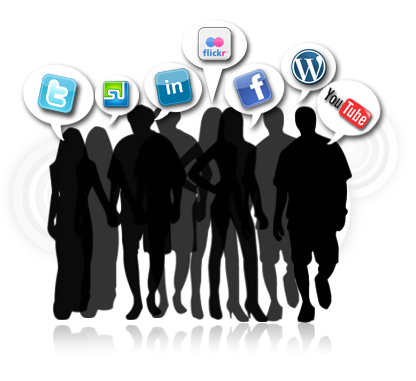 |
Responding to Customers on
Social Networking Sites |
Now some more advanced techniques for communicating on social networks…
Those were sort of my Top 10 Netiquette Commandments, they provide a nice framework to keep you out of trouble, but they really don’t help you much along the lines of build trust and business relationships that result in more sales. In order to do that, you are going to have to learn some more advanced ideas about interpersonal communications between human beings.
The number 1 thing you need to know about human beings is this: We all pretty much do whatever the easiest thing is to eliminate the most pain or create the most pleasure in our lives. In short, we do what we think is best.
In a scientific study, they found that 99% of people are generally doing this. There are about 1% who hate themselves and are self-sabotaging, but let’s go ahead and assume we don’t want them as clients. Let me explain more.
When you wake up in the morning, you never think to yourself, “Let me see how stupid I can look today. I wondering if I can do something really embarrassing, and cost myself a ton of business.” Yet those things happen sometimes, if not to us, we see it happen to others all the time. Have you ever seen someone with a tattoo on their face? Chances are they didn’t think… “I want to scare small children and make sure I never get hired in corporate America.” They probably thought it was cool, tough or maybe intimidating, and it would eliminate future pain or get them future pleasure.
So what does that have to do with responding to customers on social networking?
Well, this basic principle of psychology and communications, means a great deal to all of us. It means there is a big problem with how you communicate online, and a clue about how to fix it. It also means that there is a tremendous opportunity to stand out from the competition, because they already think they are doing their best, given the circumstances and resources.
Here is the problem. Every person on the planet is different and will evaluate what is best from a different set of circumstances. You are going to do what you think is best, but what if it is not best for the other person? Think about the “golden rule.” Treat others the way you want to be treated. There is a problem with that. What if they don’t want to be treated like you?
Here is the solution. Treat each person the way they want to be treated. This is especially true on the Internet. Each person has their own skill level of computing, internet speed, knowledge from research, social networking preferences, communication habits, as well as all the other personality and experience differences that go along with real life. That means each of your prospects or customers need to be dealt with the way they want to be, especially in how you respond online.
Here is an example. Let’s say you post your email address on your contact page, because you can formulate your responses, take time to respond at your convenience, you are a fast typer, and you can copy multiple departments if you have to. Sounds reasonable that everyone has email these days, and they can comply with this if they have a question.
However, what if prospect is an 80 year-old woman, who can’t type well, has an emergency, and she is looking up your number at a local library? Does your solution make the most sense for her?
The best way to communication through social networks is the way that your clients are communicating with you.
In order to do this effectively, you must treat each person as an individual and set up the social networks, online advertising, and response strategies for each. It sounds more complicated than it actually is, but the key is creating lots of options and then using the right tool to unlock the right door to the right customer. It is your responsibility to create an open communication channel with your clients. It is not theirs. Take some time now to think about how you can apply this concept to the way you currently communicate online.
This principle applies to much more than just the communication channel, so we will discuss this more in the future. In the meantime, keep putting yourself in your customer’s shoes, and focusing on how they want to be treated.

by MIMO Solutions | Internet Marketing, Social Media Explained, Social Networking
Here is everything you need to know about Facebook if you are running a small business:
Facebook is the king of social networks. I am getting annoyed with articles and videos that tout the number of people on Facebook, so I am just going to assume you have heard of it and you know it is a big deal. Facebook is all about the “like.” If you “like” a person, you become friends with them. If you “like” a business, you will follow them and get their updates. If you “like” a post, picture, website, product, update, story, or anything else, then it will tell all your friends that you like it. There is NOT a “dislike” button on Facebook, so the key to being successful is being
Likeable.
For small businesses, there are a few things you need to know. First, if you don’t have a plan for dealing with Facebook, you are missing out on a chance to connect with potential clients. Second, hardly any small business actually do have a plan of attack for Facebook, so it’s not too late. Finally, on Facebook there is a very fine line between the business and personal aspects of the site, so it is best to draw a hard line for yourself and your employees.
Here are the advantages of using Facebook compared to other social networks:
- Your audience is on Facebook, because pretty much everyone is.
- Facebook can target users much more effectively than other forms of advertising because it has so much information about its members.
- Being “liked” is a really good way to generate referrals, reviews and recommendations from your customers. Facebook shows people when one or more of their friends like something. This is called “social context.”
- Facebook is generally a long-term relationship with your customers, so when someone likes you, they will see your updates for as long as you are connected, which is until they un-like you.
- There are many applications, tools, and features on Facebook to help you connect and take advantage of the relationships.
- You can easily share links to your website, photos, videos, and other information with your fans.
- Since recently going public, Facebook is attempting to become very business friendly add dashboards, stats and extra advertising opportunities to help you reach new customers, engage current ones, and track how many people see and interact with your posts and pages.
- Those stats help because with so many people and so many updates every second around the web, it is hard to even tell if people see your update in their news feed. Typically, posts stay relevant for about 24 hours, but Facebook tracks them for 3 days.
 Getting started on Facebook for small businesses:
Getting started on Facebook for small businesses:
- The most important thing to do is separating your personal and business life by creating a business page. Do this as soon as possible. Chances are that you have already received friend requests from clients, prospects, referral partners, and people trying to sell you stuff. Help mitigate that keep your personal information and posts personal, by setting up a business page.
- If you scroll to the very bottom of the Facebook website you will see a link to “Create A Page.” If you visit a business’ fan page, you will also see the link in the upper right of the page. Click it and begin filling out the profile just like you did for yourself. Make sure you select the correct type of page, because the features differ for celebrities or topics and local businesses.
- Work on completing as much of the profile and information as possible. Be sure to include your address, phone, and website. Upload lot of pictures, any videos you have, and share links to your blog and any other websites you have.
- Use the Admin panel at the top of your page to monitor your progress and invite your contacts to like your new page. You can only invite your Facebook friends at this point, but that is OK, just click invite to send a message to anyone you think that would be interested. This is also where you will see notices about new people who liked you, and any comments on your posts.
- Click on “Build An Audience” to start promoting you page. Invite friends and email contacts, and don’t forget to share it on your own personal wall. Those are free, but you can also create a Facebook ad to promote this page to people you are not connected with.
- There are two types of ads on Facebook that you need to know about: Page Ads and Promoted Posts. Basically, you can just advertise for people to visit and like you page, or you can advertise one of your status update posts to have it appear in more people’s news feeds. I have seen both work very well, but I would not run a Promoted Post unless you have a really good post. If you post about an upcoming event, contest, coupon, or really great article, then go for it. If it is just an average here-is-something-we-did post, then you will see better results from the generic Page Ad.
- Start by using the regular Page Ads to start building your audience. These are just pay-per-click ads that promote your page to anyone on Facebook. The targeting options are very cool, so make sure you set them very specific for your target market. You will need to start here because the next two options work better when you already have people liking your page. I would recommend running this basic add until you have about 500 fans, and then switch to the next two.
- Promoted Posts need to be set up immediately after posting. This advertising option is only available for 3 days after your original post so plan ahead. Compose your really great offer or post and submit it, then immediately click create an ad at the top of the page and choose the post as your advertisement. Select the demographics and budget and you are on your way.
- Use Page Ads with social context to build the number of likes for you business. This campaign I recommend running continuously with at least a small budget. It is called the “Friends of Fans” option. This ad will only appear to people who are friends with someone else who has liked your page. This is a great option because the price is lower on the smaller audience, plus people who like you are more likely to know someone else who needs your company. Another benefit is that those friends who see the ad will get a bonus recommendation from the friend who likes you, it is like an automatic referral. Again, this is called “social context” because when someone sees your ad, the also see a social friend who likes the company and it puts it into context for them.
- Create a calendar around how often and what you post to your business page. Most people struggle with what to post on their business page, but if you plan ahead and create a regular calendar for updates you will get the hang of it. You can post product announcements, new hires, press releases, industry articles, recommended books, testimonials, quotes or thoughts of the day, and all kinds of things depending on what you think your audience would like to see. The important part is to post on a regular basis so people know what to expect. Shoot for at least once per day, and up to 3 times. Don’t go over that unless you have fanatics and very large audience who need information more than that.
- Use the 80-20 rule for posting advertising and marketing messages. No one likes to be bombarded with ads, but it is OK to ask for the order ever once in a while. Facebook is a social network, so think about it like a business networking event. No one would talk to the guy who just walked around saying, “Buy from me!” the whole time. About 80% of your posts should be interesting information that people would “like,” and the other 20% of the time try to make an offer or call-to-action that people would share with their friends or would “like” to receive.
When developing your marketing plan for Facebook, think about what people “like.”
Remember, there is no “dislike” button so controversial topics or negative posts about something don’t work very well. Have you ever seen someone share bad news like their dog passed away, and people click “like” on the post? It doesn’t make any sense… Think about what information and messages would cause someone to say, “Hey, I like that!” They also would need to want their friends to know that they liked it, so keep that in mind as well.
How can you be likable and take advantage of being liked? That is the key question you need to answer before beginning a business campaign on Facebook.
Finally, I began by mentioning that you want to separate your business and personal accounts. I would encourage all business contacts to like your page, and not add them as a “friend.” Some people hate hitting the ignore button and not adding someone, but it is truly what is best for your business. Ask yourself if you really want this person to see updates from your mom or pictures of your kids. Your personal friends are going to share a lot of information and tag you in pictures that are not business related. I find it best to clearly define who is a “friend” and who is a business associate.
Not all people have taken this approach yet, but I think in the near future, you are going to see a lot of issues and un-friending of business contacts. With the massive amount of people on Facebook, less is more when it comes to friends. Anyone can follow your business page, and they will only see your business updates, but be choosy about who you let see your entire personal life. And how much time you spend on Angry Birds or Farmville…
If you need help setting up your business Facebook Page, just shoot me an email and I will help.
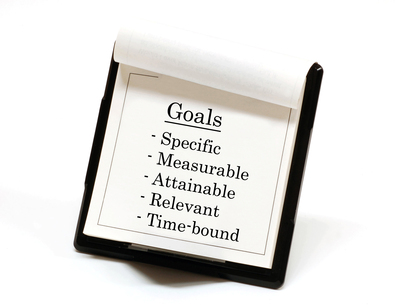
by MIMO Solutions | behavior, goals, marketing, sales, social media marketing, Social Networking, tips
 |
| How to set goals for your social networking behavior, results and target markets. |
Getting Started With Goal Setting
Before you start setting goals for your social networking activity and results. There are a few things you need to know about goal setting in general.
- Just the act of setting SMART goals increases your chance of success by 10 times.
- Written goals increase that likelihood even more.
- Sharing your goals with your team, family or accountability partner again increases your chance of success!
- You can only manage what you can control. Setting goals for other people’s behavior is futile.
Studies show that only about 50% of people have goals in general, only 10% have written goals, and only about 1% have a plan to achieve them and share them with an accountability partner. Those people who do all three are exponentially more likely to achieve their goals than those winging it.
I hope that doesn’t come as a shock to you. If you wanted to take a road trip, you might want to decide where you are going, get directions, and tell someone else where you are going. Chances are you would get there safely. If you just took off one morning with no goal or plan and didn’t tell anyone, you might end up lost forever.
Most importantly, you can only manage what you can control. You have probably heard about SMART goals before, but you may not have considered this. Setting goals for result, especially those that depend on the action of others is generally not helpful. They are nice to have in mind, and important for determining your behavior, but they alone will not lead you to success.
Let’s use an example. If you set a goal to get 100 likes on your Facebook business page, it sounds like a good goal. However, it tells you nothing about how to actually achieve it and what actions to take. Even worse, it depends on other people to take the action by clicking “like.” You can’t force anyone to do that, so your goal is out of your control.
If that is the result we want, there are still goals we can set. The just need to be SMART goals which we can manage and control.
Smart Goals are:
- Specific
- Measurable
- Attainable / Achievable
- Relevant / Realistic
- Time-Bound
Specific leads us to the exact location we want to be on our road trip. Measurable and attainable tell us that we need to be able to track our progress, and it needs to be a behavior we can control. It is hard to measure unspecific feelings, or generalities like “be more successful,” “be well-liked in the community.” or even “get more leads.” How can you tell if you are making progress or even achieved “being successful”?
Relevant or Realistic is also very important. If you goal seams impossible, it is unlikely that anyone will go after it. Great goals inspire action. It needs to be relevant to the outcome you want and realistic so you believe you can achieve it with the right actions.
Finally, goals need to be time-bound to drive you to action and inspire you to achieve them. This can be done in to way. By simply adding a date that it is to be completed, or by adding how often you need to take the action. Let’s try some examples for social media.
Setting SMART Goals for your Social Networking activity
There are three categories that you will need goals for in your social networking activity. You will probably want to plan and track your progress toward what you need to be doing, who you want to reach, and the end results for your business. In other words your behavior, targets and results.
Behaviors
- Post status updates on Facebook three times per day, morning, noon and night.
- Write one call-to-action message, one original thought or blog, and re-share some interesting post about my industry on Facebook to fulfill my 3 post per day on Facebook.
- Send 5 Tweets per day, 3 Re-tweets of interesting posts, 1 original thought, and 1 call-to-action.
- Post one interesting article, either mine or someone else’s on Linked In.
- Share a link to an interesting article or +1 a website on Google+ once a day.
- Write one original blog about an industry hot topic per week.
- Send and informative email blast to my clients and prospects once per week that contains my new blog post, a call-to-action, and links to my social networking accounts.
Targets
- Respond to every email, direct message, or comment received within 24 hours.
- Add any new connections or business contacts I have made to my email lists each week.
- Find 1 new interesting industry expert to follow on Twitter every week.
- Add any new requests or suggested family, friends and personal connections on Facebook who I would like to talk to in the real world, each week.
- Add any suggested connections on LinkedIn who I have met in person or done business with in the last year, or I know well enough that they would take my call.
- Add suggested connections to appropriate Circles on Google+ each week, if they are someone I would like to keep in touch with.
- Update my list of the top 10 potential clients I am targeting weekly, and make at least one attempt to contact them or share an interesting article with them.
- Make contact by phone or email with at least 5 of my top 20 referral partners or strategic alliances.
- Clean out my contact lists every quarter, and remove anyone I no longer want to be associated with or have not interacted with in over a year.
Results
- Schedule 1 meeting per work day with a referral partner.
- Schedule 1 meeting per work day with a potential client.
- Follow up on all leads generated through my calls-to-action on the social networks and email blast.
- Ask for referrals, reviews or recommendations from every new client.
- Thank referral partner with an appropriate reward for each referral that becomes a client, and explain why if the referral did work out.
- Review my Google Analytics, Facebook page dashboard, and any other reports monthly, and make notes on what generated the best response and track my progress.
There are many other goals you could set, but these are some of my favorites, because they are all things that you can control and do on a daily, weekly, or monthly basis. It is very hard and frustrating to only monitor results because they can fluctuate on thing outside your control. Plus, if you try to manage results, you are managing in the past. Typically, the results you are getting now are based on your activity from one to 3 months ago. In longer selling cycles, it could even be that the sales you get this month are a result of networking or referrals from over a year ago.
Feel free to use any of my goals above, or discuss some more appropriate goals for your organization. The ones listed above could actually be mores specific, but I wanted them to apply to more people. For example, “follow an interesting industry expert” would actually be better as, “follow an internet marketing expert.”
Goal setting will set you apart from the majority of humans and businesses, so take an hour to write them down this week. Then just follow the plan and adjust as necessary. Keep them SMART, and keep them positive. If you need any help, just email me.

by MIMO Solutions | Internet Marketing, Social Media Explained, Social Networking
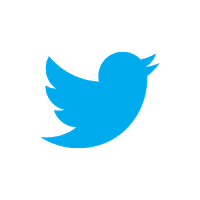
Twitter Explained for Business
Here is everything you need to know about Twitter for small business:
Twitter is an interesting social network designed to help you find out what’s happening, right now, with the people and organizations you care about. For small business, that means two things. You should use Twitter to keep track of news and new information about what’s happening in your industry. Plus, you should be using it to help people who care about you and your business keep up with what’s happening in your organization.
Twitter is all about the status updates, and limits posts to 140 characters. This means that you have to limit your posts to one sentence about what you are doing or would like to share with the world, right now. There are some cool tricks that you can use to share and connect a whole lot more than 1 sentence though, so keep reading for how to Tweet effectively.
Here are the advantages of Twitter explained, compared to other social networks:
- You don’t have to follow back. This is Twitter’s biggest advantage. Most social networking require you to connect both ways to socialize. However, on Twitter you can follow others or they can follow you and it does not have to be reciprocal.
- This is a big advantage for business and celebrities who would see millions of other people’s updates on Facebook or LinkedIn, but here they can be followed by many without following them.
- Twitter is rapid fire and it is socially acceptable to post a lot more often than other networks.
- Twitter has developed it’s own short hand and culture to take advantage of the 140 characters, so once you are in the club and figure it out, it can become a lot more powerful.
- It is a lot more mobile than other social networks. Since it is so short, it is easy to post from a phone or tablet, and many people use this aspect to their advantage.
- Hashtags or the # pound symbol was developed here to allow people to share on a common topic, so you can also search and follow news or social topics quickly.
- Speed is Twitter’s main advantage though, you can post or repost other people information with just a few clicks, and the short messages mean people can share news or updates very quickly.
 Getting started on Twitter Explained:
Getting started on Twitter Explained:
- Getting your profile set up is super easy. Again the main advantage of Twitter is the speed, and no other social network can compare with Twitter on this one. Sign up with your email address, pick a screen name and password, and upload a picture for yourself then you are pretty much ready to go.
- You should also immediately follow the favorites in your industry as well. The easiest way to gain followers on Twitter is post about or to some of the industry experts in you field. You also get to see what they are Tweeting and get an idea about what people want to hear.
- Don’t forget about #Hashtags. By putting a pound sign in front of a #Word or #PhraseBunchedTogether you can join the conversations about these topics, and others following those trends will begin to follow you.
- By putting the @ symbol before a person’s screen name, you send the message to them and all their followers. This is a good way to start a conversation with a specific person as well as get noticed in your industry, just don’t abuse it. Try it with me, and put @mikedmontague somewhere in your next Tweet to make sure you get it right. I will write you back and let you know I received it.
- Find other people and topics to follow by doing a search on Twitter. Twitter has a super fast search engine that only displays what has been posted on Twitter, so you won’t get normal Google looking results. They will be separated out into Tweets or People for you to follow.
- When you find someone interesting, just click the blue follow button to add them to the people you see when you log in. You can stop following people at any time, so try a bunch of people and then unfolllow people who post too much or not enough for you liking.
- Keep this in mind for your Tweets as well. The recommendation for frequency on Twitter is about 3-5 Tweets per day. Posting too much will monopolize people streams and they will unfollow you, and if you don’t post enough it is hard to get people’s attention to gain followers. In comparison, once a day is good for LinkedIn, and 1-3 times is good for Facebook and Google+.
- Tweets never expire, but the have a quick shelf-life. Your Tweets will be archived on Twitter forever so keep that in mind, but also consider how long they are relevant. Again, Twitter is all about speed and what is happening right now. Most Tweets only stay at the top of people’s feeds on their homepage for about 6-8 hours. After that, so much has happened and so many other people have posted that yours has slipped down the list and will likely never be seen unless someone goes to your profile page.
- Learn to Retweet interesting posts by other people. When you post a status update, it is called a Tweet. When you “like” or repost a Tweet by another person it is called Retweeting. Most people are familiar with “liking” on Facebook or LinkedIn. The action is similar on Twitter, but it is called Retweeting. You are basically just re-sharing their Tweet with your followers exactly like it what written. Look for the symbol looks like a recycle symbol that is vertical under anyone’s Tweet to Retweet them to your followers.
- If you really love a Tweet or want to save someone else’s Tweet to read later then you can Favorite it. By clicking on the star symbol under any Tweet you can save it to read later and let others know that you really loved it. This is called Favoriting a Tweet. You can go back to these Tweets from your profile page. This plays off the speed of Twitter. Since Tweets go stale in 6-8 hours, if there is a link or quote that you want to revisit in a few days or months, it will be hard to find unless you Favorite it. This should be the goal of every Tweet you write… Would someone favorite it and why? Note- People rarely do this, so don’t expect it, but there is no reason that can’t be a goal.
When you think Twitter think speed. What is happening, right now, that other people really need to know?
You may find it hard to write 3-5 Tweets per day as you get started, but I will give you trick. Most Twitter users will Retweet other people’s updates 2 or 3 times per day. So you can use other people’s updates for 3 of your posts. Then write one unique thought about a hot topic in your industry. Finally, share one post with a link to your website, and share what you want people to buy or participate in for your business.
So your Twitter posting schedule would look something like this:
- 8am- Retweet a post from people you follow that is the most interesting.
- Noon – Retweet another post then write one with the most important thing going on in your business or industry.
- 3pm – Share a link to your website and ask people to buy, share, or sign up for something.
- 7pm – Retweet another interesting post or quote from the day’s Tweets by other people.
Obviously, you don’t want to be too predictable for your followers and some people will be on at different parts of the day, so you will want to rotate when you do each of these throughout the course of the week. Keep it interesting and keep at it. Twitter has it’s own language and culture that you will learn over time, but this post will keep you from looking dumb in the meantime.
Twitter is very easy to use but if you have any questions, just email me and I will be happy to help.

by MIMO Solutions | goals, marketing, sales, social media, social media marketing, Social Networking
 |
| Having A Sales Mindset on Social Media Isn’t A Bad Thing! |
You might want to change your mindset about “sales” to be successful in your social networking online…
Chances are you have the wrong idea about “sales” as it relates to your behavior.
Most people are either deathly afraid of being considered a salespeople or too pushy, or they have no idea about what sales actually is and they are the one’s being to pushy.
So that’s the problem, about half of the people are too weak and the other half are too strong. It has always been a funny fact of life to me that about half of the population is afraid to do what they dislike in others, and the other half has no fear, but no filter either. This is especially true when it comes to the sales profession and what an actual professional salesperson looks like, sounds like, and behaves like.
Did you know that “sales” has been one of the most hated professions since is was officially created in the 1920’s? It is right up there with lawyers, politicians, and dentists every time they do the surveys. The most loved professions are things like teachers, clergy, and firefighters. These should come as no surprise to most people I would guess.
How many third graders do you think you would have to ask to get just one that said they wanted to grow up to be a “salesperson”? About a 1,000 is what we have come up with, you will find an occasional kid with the gift of gab and professional salesperson as a mother or father who is a strong role model for the child. The rest of us would rather be astronauts, doctors, and teachers.
However, do you happen to know what the most popular profession is in the United States? Surprise, it is “sales” with over 4.2 Million people performing the role, not including inside sales, waiters, or cashiers who all also happen to sell for their profession!
Last one, do you know what professional is a perennial contender for the highest paid profession? If you didn’t guess it, you need to pay better attention. Salesperson has almost always been in the top 5 highest paid professions since its inception. Now there are a lot of people making low wages as salespeople, so the average doesn’t come out in the top 10, but as far as top earners are concerned, salespeople come in right with CEOs, doctors, engineers and lawyers.
Why you might have the wrong idea about what professional salespeople do:
- Salespeople have a bad PR department. We take a bad rap in commercials, movies, and TV shows. We are associated with used-cars, polyester suits, and either the most pushy or most slick of our kind. Eventually, we need to get together and sell some marketing people to take on the task of changing our public image…
- Good salespeople make a lot of money. Did you notice the correlation above between the income of the most hated and most loved professions? The most hated generally rake in the dough, while the most loved are notoriously underpaid for what they do.
- There are a ton of bad salespeople out there. This one I will grant you. There are a ton of people doing it wrong. Hey, we have 4.2 Million salespeople out there; they can’t all be winners. People rarely talk about the good ones though. They silently propel companies and communities forward without being noticed.
It seems like our perception as a people of “sales” is bipolar. We love that people are willing to do it, we just don’t want to be one, and we don’t want them calling on us. We will gladly pay salespeople large sums of money for what they do, but then run and hide with our phones turned off if they are being paid by someone else.
People hate to be sold, but they love to buy!
In order to have the best of both worlds, to make sales and make friends, it takes a special mindset and a balance of the good, the bad, and the ugly aspects of sales.
What can you do to make sure you have the right sales mindset when you are on social media sites?
To me, great salespeople are like great waiters and your favorite restaurant. This is the sales mindset you should have on social media.
- You want to compliment the experience not force or artificially create it.
- You want to make suggestions about ideas that will enhance the experience.
- You want to be likable as a person and a company, and create an atmosphere that compliments your brand.
- You want to listen and anticipate the needs of your audience.
- You want to solve problems and make sure the customer is happy.
- You want to encourage your customers to try new offerings.
- You want to use your expertise to point the customers to the right solution for them.
- You want to welcome new guests and explain why people love you and why they made a good choice to check you out.
- You want to have fun and promote an environment that matches the customers expectations.
- You want to let them know when things have an up charge or will take longer to receive.
- You want to make sure they understand their purchase if people make common mistakes.
- You want to make sure they are 100% satisfied with the experience before you deliver the bill.
- You want to clean up after there messes if they make a mistake with your product or service.
- Finally, you encourage them to spread the word if they liked the experience, or ask for feedback if they did not.
All of those things a waiter does well, are the exact same things that will help you grow your business on social media sites, and create a raving fan base of loyal customers, who refer you often. Some people call it customer service, some people call it marketing, some people proudly call it sales. It really doesn’t matter, but those things that make a waiter great, are the same things that make salespeople great.
They create an atmosphere and environment which allows the customer to buy, while the salesperson stays out of the way.
Some, so called sales and marketing gurus, will tell you that this means the salesperson is unnecessary. That could not be further from the truth. Please don’t think that you can use marketing automation, can the salespeople, and still create that kind of environment.
There is a reason that a drive-through, fast food experience is different than being served by a great waiter who helps create a memorable experience. It is called “salesmanship” and it results from interpersonal communication and treating each person like the individual that they are.
You cannot substitute information and automation for interpersonal communication and expect the same results!
Don’t be afraid of being a salesperson, be afraid of not selling anything or not serving your customers the way you want and they deserve. Learn how to develop a sales mindset appropriate for social media and create the experience you would want when dealing with your company.

by MIMO Solutions | Internet Marketing, Social Media Explained, Social Networking
Here is everything you need to know about LinkedIn for small business:
LinkedIn is a a business networking platform. It should be used to keep up with and in touch with your top referral partners, strategic alliances, and trusted colleagues. LinkedIn is not really a social network, as much as a business network, so your updates should almost always be business related and professional sounding.
The advantages of using LinkedIn explained:
- LinkedIn easily shows you how to get introduced to someone you would like to do business with.
- LinkedIn allows you to create or join groups to encourage specific networking conversations.
- You can build your online resume and professional reputation through your profile.
- LinkedIn creates company pages for each organization and compiles information from everyone listed as an employee, so you can explore different levels of an organization.
- On you profile, the website links are great for search engine optimization and leads viewers to you home page.
- LinkedIn Jobs has become one of the top resource for finding a job or an employee.
- You can export your contacts in LinkedIn to your CRM, Outlook or email marketing software.
Getting started on LinkedIn explained:
- Sign in or create your account with your work email address. Remember, LinkedIn is for business so all of your contact information should be you work info not personal. People will be searching for you by your name, email, and phone number used at work.
- Make sure your LinkedIn profile is 100% complete. The set up tool is fairly simple and does a really good job of telling you what information is still missing and encouraging you to keep it up to date. Fill in as much as possible, and remember to use the same photo on all social networking sites. You want to create your personal brand. Never use a company logo for a personal profile image. People connect with people not corporate logos. They want to see your face to confirm it is the correct person and they will recognize you if you end up doing business in person.
- Choose your connections carefully. All of the social networking sites encourage you to add as many people as possible and make suggestions for people you might know as well. However, especially on LinkedIn, you need to be careful about who you associate with and who you recommend. Scientific studies have shown that you can only maintain about 150 personal relationships at a time. So while having 6,000 connections looks impressive, chances are that you are not really connected to any of them. Having around 150 real referral relationships with people you know, like and trust will be way more powerful in the long run. It should go without saying if you follow this philosophy but I will say it anyway:
DON’T ADD CONNECTIONS YOU DON’T KNOW IN REAL LIFE!
- Make and request recommendations carefully. People judge you based on the company you keep. You will want to only request recommendations from people who you know support you, and you will only want to recommend people who you would recommend to a client or friend. Again, LinkedIn becomes a visual representation of your professional business network to the entire world including future clients and referral partners. Protect it like you do your business. You have heard the old saying, “It’s not what you know, but who you know that counts.” Well now both of those things are available to future clients or employers, so treat LinkedIn recommendations like your social capital and spend it wisely.
- LinkedIn updates should be less frequent than other social networks. Twitter recently cancelled the auto-publishing agreement with LinkedIn, so now all your tweets do not automatically display on LinkedIn. I think this is actually a great move for LinkedIn. In a business networking setting, you don’t need to discuss what you had for lunch, or the sports hot topic of the day. You only need to share information related to your business. This does not mean “marketing messages” or “sales pitches,” the best information is stuff you would share at a Chamber of Commerce networking function in person. What is new in your industry? What are your frequently asked questions? What great article did you stumble across this week? What has changed in your profession? Did you hire a new person, release a new product, get a promotion, or speak to a professional organization? Share these types of things on LinkedIn, not your personal whims and musings.
- There are lots of sharing tools for LinkedIn. The one I like best is Hootsuite because it allows you to schedule your updates in advance. Chances are that the questions about spurred several ideas of stuff you can share on LinkedIn, but if you do it all right now, you will bombard your connections and not have anything to share tomorrow. Use a tool like Hootsuite to schedule 1 update per day for every day of the week or month, however far out you can think. You can always go in and cancel them or add more than one update if something comes up, but at least you will know that your profile isn’t dead and rotting over time. I like to use Monday mornings to get to work early and schedule my updates for the week when the important priorities are on my mind.
- Get involved in groups, but again choose carefully. Group logos are set to display on your profile but you can change this, as well as the number of updates you receive from the groups. Only join groups you are going to participate in. The number one mistake of social networking participants is that they over-extend their network. You can be a member of 100 groups, but if you never have time to check in, what good are the doing? Start slow and try couple groups for industry experts in your field and the local chamber of commerce. Try to respond to posts or create a topic and see how it goes. Remember, most people are overextended so don’t be surprised if no one comments at first. If the group is dead, delete it and try to find ones that stimulate you and your business.
- Update your profiles and trim your connections quarterly. Studies show that your world changes about every 90 days. New product or services are priorities, seasonal offerings come up, you have changed your marketing message, or are focusing on a different skill set. Also, people come in and out of our life constantly. Someone who you thought was going to be a great strategic alliance found a different vendor, retired, or stopped serving their customers like you would hope. Take a day once a quarter, I like the first day of a new quarter, to go into LinkedIn and clean things up. Bloated connections and outdated information make for bad networking. Trim some of those connections who you haven’t spoken with in 6 months, and keep your magic number around 150. It might seem odd now, but you will find that if you add new connections and delete people you know longer do business with your number will stay right at about 150.
 LinkedIn has a slowly become my favorite social network, and it just might be the same for you.
LinkedIn has a slowly become my favorite social network, and it just might be the same for you.
It is not flashy, it doesn’t have pictures or videos of cute kittens or guys getting hit in the junk, but what it does have just might transform your business networking. All of the Fortune 500 CEOs, and almost everyone you will meet in business has a LinkedIn profile. You can easily see how you are connected to any of them by visiting their page. Then it is up to you to manage your network and leverage your connections to meet and do business with who you want.
If you really want to get good at LinkedIn, I suggest taking a
business networking course like this one from
Sandler Training. If you can network offline, and apply those principles online, you will have great success.
LinkedIn has some great tools for helping you set up and complete your profile, but if you have any questions, just email me and I will be happy to help.
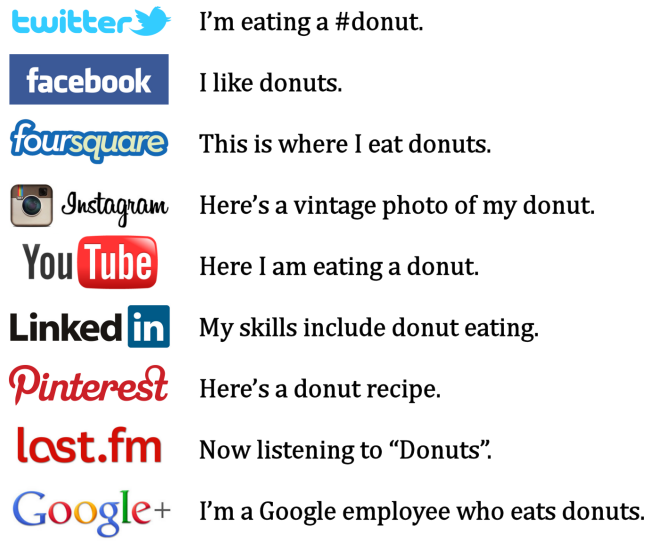
by MIMO Solutions | Internet Marketing, Social Media Explained, Social Networking
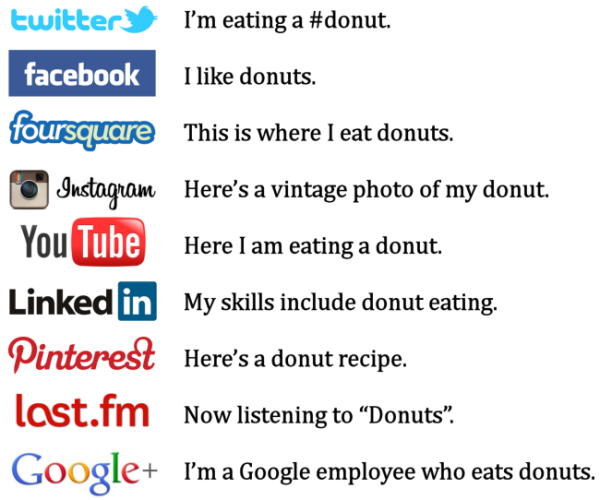
I love the “Social Media Explained” meme on the Internet.
Oops, there is nerd-term #1. A “meme” is an ongoing “inside joke” on the Internet. Google “social media explained” in Google images and you will see dozens of versions of the image above. Pardon the pun. People have done this graphic with running, and tons of other substitutes for “donuts.” So a “meme” is a running joke where people do their take on a popular Internet topic. See also “Call me, maybe” or look up any popular YouTube video and you will see hundreds of people with their own versions or spoofs.
 Now back to explaining Google Plus!
Now back to explaining Google Plus!
Here is pretty much everything you need to know about Google+ for business. If you want to have fun and experiment with other things in your free time, go for it!
These are the basics and necessities for companies or professional individuals on Google Plus.
Google+ or “Google Plus”
 I am starting with Google Plus because it now includes Google Places’ local maps and it has been incorporated into Google’s search results with the +1 button. You HAVE TO at least create a personal account and your Local page for your business and make sure they are complete. If you want any traffic or referrals from Google, you just have to figure out how to make Google+ work for you.
I am starting with Google Plus because it now includes Google Places’ local maps and it has been incorporated into Google’s search results with the +1 button. You HAVE TO at least create a personal account and your Local page for your business and make sure they are complete. If you want any traffic or referrals from Google, you just have to figure out how to make Google+ work for you.
Google has also recently added Events to Google+ so you may be able to use this to invite and schedule some cool things. Hangouts are also a feature included that lets you create or join your own chatroom. You can get a group of people online and all “hang out” together much like a video conference or old school “chat room”.
Here is Google Plus explained:
- Google+ is cool because you can add people to “circles” and you don’t have to add people back who add you. This allows you to keep some privacy and separate the groups of people in your life and business.
- Google’s +1 button is basically similar to the “like” button on Facebook. A +1 means you like or are adding your vote of +1 to the topic or website. The more votes you get, the higher the search rankings and the more people see your post.
- Creating your profile and a local page for your business are pretty simple. Google will guide you through the process and even auto-fill some stuff if you have an account there already. Make sure you claim your local business page, because if you are in the phone book, chances are there is already a listing for you.
- Follow the instructions to add your page badge to your website. This helps Google link your account and website together and verify official pages for you business. Also, on you profile pages be sure to include links in the websites or contributor categories for all your social media accounts and websites. This helps Google link all your stuff together and it will improve the search results for your business.
- Finally, start adding people to you circles. The cool thing about circles is that you can pretty much add anyone and as many as you want without getting overwhelmed or over-sharing your privacy, because you can sort them. I recommend 4-5 circles: Family and Friends, Customers, Leads, Acquaintances, and referral partners or team members. That way you can share baby pictures or party pics with friends or family and inside information with team members without sharing it with the world. Just know that “public posts” go to everyone.
- There are no sharing tools or linked accounts with Google Plus yet, so you are going to have to log in and post here separately and update your account on at least a weekly basis.
You can visit the help section or email me with any questions while getting started.
There are not a lot of people officially on Google Plus yet, but the number is growing very fast because so many people have Google accounts for Gmail, YouTube, and their other services. The good news is you get to be on the cutting edge for awhile, and there are plenty of good account names available. Which is a plus for Google.
Stay tuned, over then next few weeks I plan to explain the other social media sites!

by MIMO Solutions | communication skills, marketing, sales, social media, social media marketing, Social Networking
 |
| How do you put together the pieces of a great social networking campaign? |
I was teaching a sales class about how to use social media the other day and this question was posed to me. I thought it was very interesting and something I have been struggling with for awhile. I am going to share my thoughts here, but I would love some feedback in the comments. Do you think businesses should be training salespeople to use social media or social media people and marketers how to sell?
Is it easier to train sales people to use social media or to train social media people to sell?
I have dealt with this from the sales side a lot as a
Sandler Sales Trainer. Everyone wants to know if it is actually something you can learn, or it is something you naturally have. I have also taught introductory computer classes for the elderly and out of work. I can absolutely say without a shadow of a doubt in my mind that you can train people to be better at sales, and you can train people to be better at computers and social media. I have done it for thousands of people.
However, that doesn’t really answer the question of which is better or easier… Really, it is a fundamental question of human behavior. There are generally four things that people are good at: working with the big picture and making decisions, working with people and influencing them, working steadily and keeping the peace, and working with details, systems and compliance. This is know and the DISC behavioral model if you want to learn more.
 |
| DISC Behavioral Styles |
Here is what you need to know for sales vs. social media:
People who are naturally gifted at sales are called “Influencers“. They are good at things related to social situations and communications. They are extroverts and people-oriented.
People who are naturally gifted and computers are called “Compliants“. The are good at things related to structure and organization. They are introverts and task-oriented.
These two types of people are exact opposites. Most people have some combination of all four types because all of those things are necessary to survive as a human being. However, Influencers and Compliants are on the opposite sides of the spectrum, so it is rare to find someone who will be high in both of these categories.
So which type of person makes the best and easiest social networker on the Internet?
The answer is training one person in the opposite task from their natural strength will be equally painful for both.
If you try to get an Influencer to sit behind a computer by themselves and focus on a task, they will be very stressed. If you try to get a Compliant to go out to a business networking function and deal with people, they will be very stressed. However, this doesn’t mean that you have to give up.
So who do you put in charge of social networking?
You can find the rare person who can do both well. Since there are millions of companies and some are existing entirely of 1 person, there is a good chance you can’t find yourself an I-C combo who happens to be an expert in Internet marketing and your business.
You can team up an Influencer with a Compliant and teach them the value of the other persons strengths. Salespeople generally know that they hate details and paperwork, and would much rather have someone else do it, and IT people generally realize they are not good at dealing with people’s irrational behavior and that they dislike trying to build relationships or popular. So as long as you explain why they need to team up and help them build a strong working relationship even though they are different, you can get the best of both worlds without stretching either outside there comfort zone.
If it is only you or you are currently in charge of social media and you are not an I-C or either, then you are going to be stressed, but you are not out of options. You can always outsource the creative or production to someone that has what you are lacking, or you can just realize that this task is going to be uncomfortable but you have to do it. There is a funny thing about human beings that we hate to do things that are uncomfortable, but the more we do the less uncomfortable the become. If you are not good at computers but you force yourself to learn, eventually they become easier deal with and you gain an appreciation for what they bring to the table.
Conclusion
Social networking takes an interesting balance of skills. You need a minimum level of skill at relationship building and computers and social media. If you are lacking in one area or the other, it is probably because it goes against your behavior style. You can except this and sure up your weakness or you can pass it off to a team member that is naturally more gifted than you. I generally recommend the latter.

by MIMO Solutions | Internet Marketing, Web Design

Steve Montague
Happy Father’s Day, Everyone!
Here are some lessons I have learned my father, and how they apply to Internet marketing. I love you, pops!
Never let money stop you from doing what you want in life.
This was probably the best business lesson my father ever taught me. I think I was around 12 years old, when my father started saying this to me. I wanted to go to the movies or get a new toy, and my father told me to figure out how to earn the money, rather than giving it to me.
As far as internet marketing goes, this is a perfect lesson. Marketing on the web can be free to very cheap. You can start your own website and business for about $15, and look very professional. It gives everyone equal opportunity to earn money and do what they want. You can build a website for anything and dive into your passions with very little investment. You can be anyone and do anything on the internet. The question then becomes what do you want in life.
Work smart and hard.
A lot of people thing this one is “work smart, not hard,” but my dad taught me that if you can do both, the sky is the limit.
The same goes for internet marketing. Some people work hard and write thousands of posts. Some people try to produce a few really great pieces of content. Why can’t you have thousands of really compelling posts and status updates? If you work smarter and harder then everyone, no one can beat your audience.
Save up to half of what you earn.
This is a very difficult lesson to learn and practice. My grandfather never made more than $30,000 a year at a job in his life. He died in 2006 as a multi-millionaire. Saving gives you options other people don’t have to invest or take advantage of future opportunities.
On the Internet, you have to realize that making money is the key to longevity in business, and saving as much as you can allows you to invest in opportunities others can’t afford. When you are pricing your services, you have to remember the government takes a third, then you pay yourself half by saving it, and whatever is left is what you get to spend or reinvest.
Have faith that things will work out, and always be optimistic.
Do you look for ways things won’t work, or do look for ways to make things happen? There are 12 ways to solve any problem. Go find one. That is one of my dad’s favorite quotes. Yogi Berra said, “It ain’t over til it’s over.”
In internet marketing, the same applies. Anything is possible, so long as you keep trying. A website is never finished, and there is no problem you can’t solve. Sure, it might take longer or be more expensive than you wished, but there is a way to make your dreams come true. Go find it!!!
Take personal responsibility for things, even if they are not your fault.
Another tough lesson, but it makes life a lot easier, you a lot happier, and other people love and respect you more. I will never forget when my dad would ask me if I wanted to do something before he gave permission. For example, if my friends asked me to spend the night at their house, he would take me aside and ask quietly, “Do you want to?” If I said yes, he would say I could. If I said, no he would say we had plans at home and I couldn’t go this time. He didn’t care if some other teenagers liked him, but I did, so he would take responsibility for the decision for me.
On the world wide web, you will come across customer complaints, frustrated employees, and competitors lashing out. It is best policy to take responsibility and resolve the issue, rather than prove you are right. Things can go viral and get out of control very fast. One customer can tell millions of people about an experience within minutes. Keep that in mind, and decide now that it is your responsibility to protect your reputation online. No one else can do that for you anyway.
Don’t judge a book by its cover, but realize that other people will.
My dad went to college in the early 70’s and graduated with long hair, a beard, and some very bad and very loud plaid suits. He learned pretty fast that you should never judge other people by their appearance, but other people are always judging you. My dad’s favorite story is when a client asked him for his jacket, then threw it in the trash outside his office, before continuing with the sales call.
The lesson on the internet, is that you have between 5-8 seconds to make an impression on a visitor. Google has done the research and people who do not like what they see in the first 8 seconds will go back to the search and check out the next site. It is a brutal reality, but you have to be extremely prepared for this. It doesn’t mean that you need to spend $30,000 on a web design, but you do have to match your visitors expectation. It means you have to give your visitors what they are looking for in a package they want, and do it very quickly.
I have learned a lot more lessons from my father, but these are a few that I remember most today. I hope it helped you with your approach, and I hope you have a great Father’s Day!
What have you learned about business from your father?
Please share in the comments below…





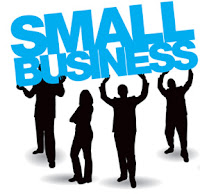










 Getting started on Twitter Explained:
Getting started on Twitter Explained:





 Now back to explaining Google Plus!
Now back to explaining Google Plus! I am starting with
I am starting with 


